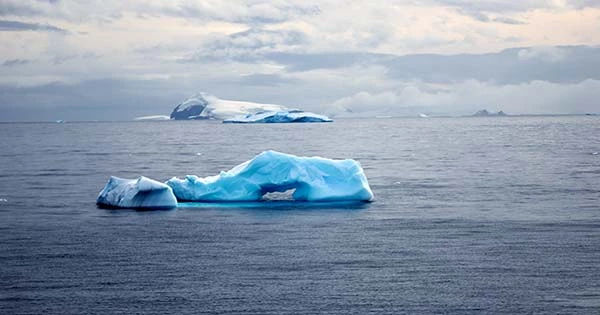The conveyor belt of ocean currents that transports warm water from the tropics to the North Atlantic is slowing down as a result of climate change. Our study, which was published today in Nature Climate Change, looks at the devastating effects on the global climate if the Atlantic conveyor completely collapses. We discovered that if this mechanism – known as the Atlantic meridional overturning circulation – were to collapse, the Earth’s climate would move to a more La Nia-like condition. More flooding rains would be expected in eastern Australia, as well as severe droughts and wildfire seasons in the southwest United States.
East-coast Australians are familiar with the debilitating effects of La Nia. Climate warming has added moisture to our atmosphere, while La Nia has warmed the ocean north of Australia for the past two summers. With record-breaking floods in New South Wales and Queensland, both contributed to some of the wettest conditions ever seen. Meanwhile, a record drought and major bushfires in the southwest of North America have put a significant burden on emergency services and agriculture, with the 2021 flames alone costing at least US$70 billion.
The climate on Earth is dynamic, varied, and always changing. However, our current course of unchecked greenhouse gas emissions is giving the entire system a massive push that will have unforeseeable implications — effects that will rewrite our textbook descriptions of the planet’s ocean circulation and impact.
What is the Atlantic’s role in meridional circulation overturning? The Atlantic overturning circulation is a large movement of warm tropical water into the North Atlantic that helps maintain the European temperature moderate while enabling the tropics to cool down. In the Southern Hemisphere, there occurs a similar overturning of Antarctic seas.
During ice ages, the Atlantic overturning circulation has shut down or slowed considerably, according to climate data dating back 120,000 years. During so-called “interglacial times,” when the Earth’s climate is warmer, it turns on and regulates the European climate. The Atlantic overturning has been generally constant since human civilisation began roughly 5,000 years ago. However, scientists have seen a slowing in recent decades, which has them concerned.
What is the cause of the halt? The melting of polar ice caps in Greenland and Antarctica is an unmistakable consequence of global warming. When these icecaps melt, enormous volumes of freshwater are released into the oceans, making water more buoyant and minimizing thick water sinking at high latitudes. In the last 20 years, a staggering 5 trillion tonnes of ice has evaporated around Greenland alone. That’s enough freshwater to fill 10,000 Sydney Harbours. If global warming continues unchecked, the melting rate is expected to grow in the next decades.
The architecture of the world’s oceans would be significantly altered if the North Atlantic and Antarctic overturning circulations collapsed. It would make them fresher at depth, deplete them of oxygen, and deprive the top ocean of the nutrient upwelling that occurs when deep waters return from the ocean’s depths. The consequences for marine ecosystems would be huge. With Greenland glacier melt now well started, experts believe the Atlantic overturning is at its lowest level in at least a millennium, with forecasts of a potential collapse if greenhouse gas emissions continue unchecked in coming generations.














